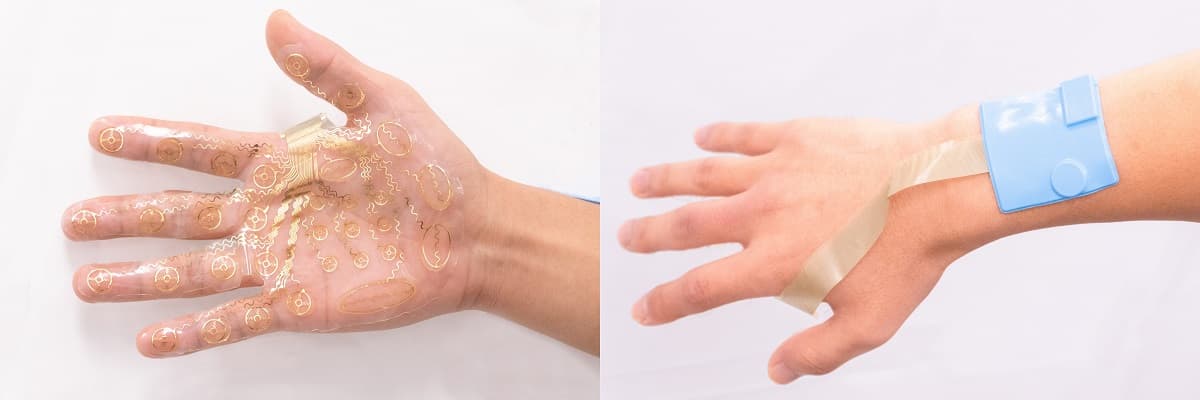While technology is making major strides in absorbing our eyes and ears in virtual worlds, it’s harder to engage senses like touch. Engineers at the City University of Hong Kong have now developed WeTac, a thin, wearable electronic “skin” that provides tactile feedback to users in VR and AR.
There’s no shortage of wearable devices designed to let users manipulate virtual objects and receive haptic feedback from them. But most of the time these devices are big and bulky, and require complex setups and tangles of wires.
The WeTac system looks like one of the neatest iterations of the idea we’ve seen so far. It’s made of a rubbery hydrogel that sticks to the palm and front of the fingers, connected to a small battery and Bluetooth communication system located in a 5-cm2 (0.8-sq-in) patch on the forearm. That battery can be recharged wirelessly.

Research team of Dr. Yu Xinge, City University of Hong Kong
The hydrogel is dotted with 32 electrodes spread across the palm, thumb and fingers, and electrical currents are sent through these to produce tactile sensations. By stimulating certain combinations of these electrodes at varying strengths, the team says that the WeTac system can simulate a range of experiences. In demos, that includes catching a tennis ball, or feeling a virtual mouse walk across your hand. Sensations could even be ramped up to be uncomfortable (but short of being painful), to give a bit of negative feedback for actions like touching a digital cactus.
The team says this system could be paired with either virtual reality or augmented reality, which could lead to some intriguing use cases. You could really feel the rhythm of slicing through blocks in Beat Saber in VR, or pet a Pikachu while catching Pokémon in the park in AR. It could even help users remotely control robots, transmitting the tactile sensation of what the robot is grasping to its human operator.
The research was published in the journal Nature Machine Intelligence. The WeTac system can be seen in action in the video below.
CityU researchers develop wireless, ultrathin “Skin VR”
Source: City University of Hong Kong
Source of Article
